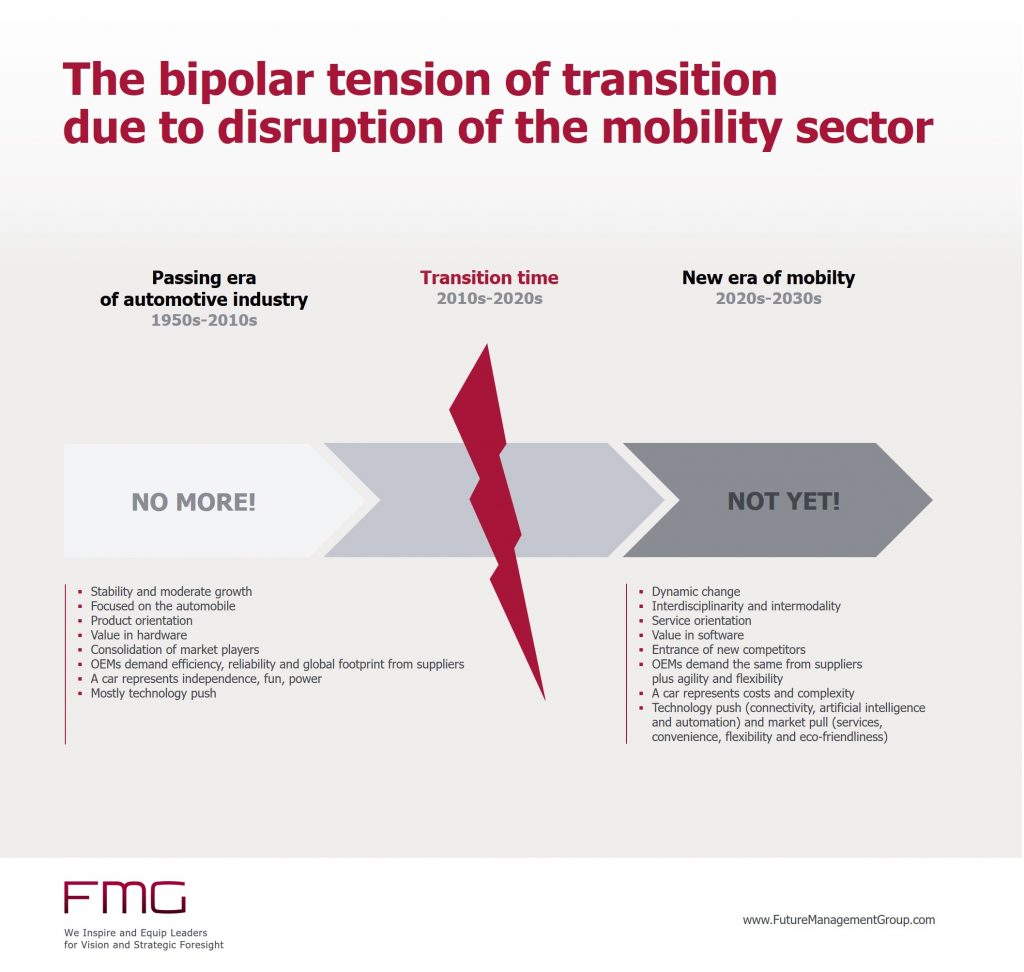There are many forecasts and scenarios for the future of mobility. On which can you really build your vision and strategy as an entrepreneur or manager? How will we really be mobile in the future? Rationally we all know that we can not predict the future. And yet, we all have this – perhaps somewhat naïve – desire to be able to foretell it. In my work with leadership teams, I often do a little experiment at the beginning of the collaboration: I ask each member of the executive board to note for themselves which are the three most important market changes of the coming ten years are. Then I ask a second question: Which changes will not occur, event though the are currently discussed? Where will the market still be exactly like today? Then we compare the opinions. The result is almost always: chaos – at least to a degree.
Continue reading “Challenge your assumptions: How will the future of mobility REALLY look like?”Surviving Disruption: How Automotive Suppliers Are Transforming for the Age of New Mobility
Much has been written about the disruption of the mobility market. Recently, I presented a conceivable scenario of how the change could occur and how this might impact car trade and after sales services, for example.

The CEO of a major automotive supplier told me last week that he expects more drastic changes in the next five to ten years than in the last thirty.
Continue reading “Surviving Disruption: How Automotive Suppliers Are Transforming for the Age of New Mobility”Roadmap to Disaster: Why nobody will buy a car in 15 years
Last year, I published this scenario on blog.futuremanagementgroup.com. If I look at it today and reconsider my projects in recent months, it seems even more relevant today. What do you think?
With the Ford Model T, mass motorization began more than 100 years ago. The carriage-dominated street scene was to change completely from 1908 within a few years. By the end of the 1920s, Tin Lizzie was sold by the millions. Many coachbuilders and companies went bankrupt. Some, the more far-sighted, developed into wagon factories, tram companies or car dealers. Motorized private transport has left its mark on the 20th century – a model of success. Now, the automotive industry itself is facing the biggest change in its history. In 15 years, no one will enter a car dealership or buy a car. Those born today may be the first generation without driver’s license.
What will happen? A conceivable roadmap …
Continue reading “Roadmap to Disaster: Why nobody will buy a car in 15 years”